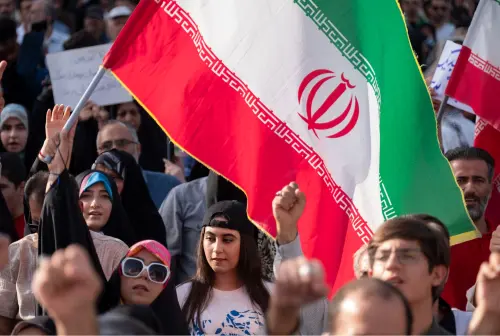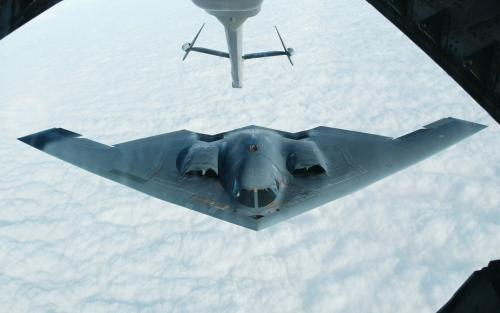The Obama administration oversaw both the ratification of the New Strategic Arms Reduction Treaty (New START) and an agreement to modernize the U.S. strategic nuclear deterrent. Today, the fragile bipartisanship that led to those achievements is fraying, as a panel of experts discussed at a Brookings event on January 7. Brookings Senior Fellow Frank Rose moderated a panel of experts, which included four former government officials and a Georgetown University professor. Panelists discussed the 2010 negotiations, the current state of the debate, and steps that could be taken to maintain a level of bipartisanship moving forward.
Setting the stage: Commitments to modernization and arms control
Brian McKeon and Madelyn Creedon argued that the 2010 Nuclear Posture Review (NPR) exemplified the Obama administration’s commitment to the nuclear triad (sea-based, land-based, and air-based delivery systems). The 2010 NPR laid out the administration’s plans for an Ohio Class replacement (later known as the Columbia Class), a new strategic bomber, and the Minuteman-III ICBM (until 2030).
John Harvey, who helped develop the 2010 NPR, agreed and said that Obama saw modernization and arms control as parts of a comprehensive strategy that was iterated in his 2009 Prague speech (in which he clarified that while the long-term objective should be to abolish nuclear weapons, until conditions precipitated a climate for such elimination, the United States would continue to “maintain a safe, secure, and effective nuclear deterrent”). As Obama began the negotiations for getting New START through Congress, the National Nuclear Security Administration (NNSA) was looking to increase funding for modernization programs. This, Harvey said, set the stage for a package deal resulting in two memoranda of understanding which traded funding for modernization in return for Republican votes.
A deal is made in 2010
McKeon and Creedon agreed that the primary commitment made in negotiations between the Senate and the White House was the appropriation of an additional several billion dollars over a 10-year period for the NNSA. Against the backdrop of an underfunded nuclear weapons complex and a Strategic Posture Commission that demonstrated the erosion of the NNSA facilities at Oak Ridge and Los Alamos, both McKeon and Creedon noted that the Obama administration had already committed to a substantial increase in the NNSA weapons budget before New START was signed.
McKeon added that several Obama administration officials publicly recognized the important link between modernizing the NNSA complex and maintaining an arms control regime with Russia. Additionally, Creedon argued that the increased NNSA funding for modernization was in large part an effort to downsize the total number of warheads in the U.S. stockpile, produced as a hedge caused by infrastructure uncertainty.
What came next?
By late 2013 and early 2014, as Creedon outlined, the Senate Republican narrative was that they had successfully pressured the Obama administration into appropriating substantial additional funding for modernization as part of the deal for New START—so much so that statements to this effect showed up in several Republican National Committee (RNC) documents.
She noted that some Republicans also questioned whether the Obama administration lived up to its commitments in the 2010 deal. While the White House clearly obliged in its commitments—additional funding was indeed provided in FY12—Congress did not, she said. The actual appropriated budgets for the NNSA in FY13 and FY14 were substantially lower than what the Obama administration agreed to, due to sequestration. Consequently, the RNC argued that the Obama administration failed to deliver on the deal. By FY16, when the appropriations finally reached the level that the Obama administration initially requested, the Government Accountability Office had released a report stating that there was not enough money laid out for stockpile stewardship and management program plans. Notably, the Trump administration’s budget proposal for modernization is actually similar to what the Obama administration had advocated for initially in the deal to get New START.
Consensus vs. compromise
All the event panelists supported Rose’s description of a “fragile consensus” in the 2010 negotiations. While every Democrat voted for New START, only 12 or 13 Republican senators did. Both Creedon and Harvey noted that they believed that the additional funds for modernization played an important role in obtaining Republican votes in favor of New START.
On the other hand, Rebecca Hersman argued that what was achieved in 2010 may not have been a consensus at all, but instead, a compromise-based bipartisan coalition. She compared it to Jenga: Each party takes turns pulling out a block (introducing low yield capabilities, recent developments with the Intermediate-Range Nuclear Forces Treaty [INF], control shifts in Congress) and advised caution so as not to pull out the block that brings down the tower.
The current state of play
Building off of Hersman’s metaphor, Rose noted that many experts regard the Trump administration’s actions towards arms control as hostile. He asked Georgetown’s Matthew Kroenig about his views on the current state of the debate and what specific steps that the administration and congressional Republicans could take to reassure their critics that they weren’t hostile to arms control.
Kroenig explained that the security environment has changed substantially since 2010 and argued that the administration’s introduction of low-yield capabilities and decision to pull out of the INF Treaty have been reactions to that changing environment. Kroenig felt confident that New START would be safe through 2021because the U.S. nuclear infrastructure still needs work, leaving the United States in a poor position to engage in an arms race with Russia. While he argued that extension of New START was likely, he noted 2021 as a potential opportunity to negotiate a bigger and better deal with Russia that perhaps includes non-strategic nuclear weapons.
Steps toward bipartisan consensus/coalition
What fundamental steps may help maintain or build a sustainable bipartisan consensus or coalition on arms control and strategic modernization? Creedon began by calling for a robust debate of the triad elements. She also encouraged a discussion on how the world has changed since 2010 in order to realistically assess the requirements needed for the U.S. stockpile, the NNSA infrastructure, and triad numbers to effectively confront the current security climate.
Harvey took a different approach, calling for the Senate Armed Services Committee (SASC) and House Armed Services Committee (HASC) to work together in a bipartisan manner. Harvey encouraged new Hill leadership to learn from previous congressional leadership and staff committees who were able to reach a level of bipartisanship on these issues. Additionally, he suggested the Trump administration focus on agreements that advance arms control, like: utilizing New START extension again as an incentive for continued modernization and developing a proposal for non-strategic nuclear arms control agreement with Russia.
In the spirit of rebuilding a coalition, Hersman suggested three things. First, a balanced approach between modernization and arms control that incorporates a compromise from all sides, including the extension of New START. Second, an appreciation that modernization and arms control are complementary. And finally, an honest conversation about resources and finances so we do not find our infrastructure and stockpile stewardship underfunded, as it was during the Bush administration. Hersman concluded by urging those inside and outside of the “coalition” to listen to both sides of the debate more carefully to reduce polarization.
Kroenig agreed that we need to find a way to maintain consensus on the Hill. He felt that this was absolutely necessary because modernization programs take years and thus must endure administration and congressional changes Additionally, Kroenig urged for flexibility in understanding the need to adapt to changing circumstances both domestically and internationally.
Finally, McKeon agreed with his fellow panelists and called on the Trump administration to extend New START before the end of his first term so we don’t find ourselves in a situation in which Trump or a new president comes into office having only two weeks in 2021 to extend the treaty. McKeon concluded by saying, in the interest of U.S. security, extension of New START is the right decision.
The Brookings Institution is committed to quality, independence, and impact.
We are supported by a diverse array of funders. In line with our values and policies, each Brookings publication represents the sole views of its author(s).






Commentary
Experts discuss the politics of New START and strategic nuclear modernization
January 17, 2019